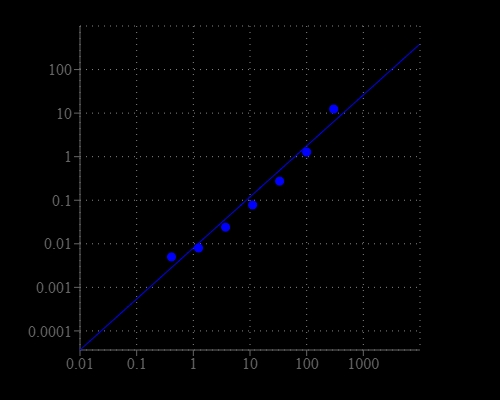Amplite® Colorimetric L-Lactate Dehydrogenase (LDH) Assay Kit
Lactate dehydrogenase (LDH) is an oxidoreductase enzyme that catalyzes the interconversion of pyruvate and lactate. LDH is present in cytosol of a wide variety of organisms, including animals and plants. Cells release LDH into the bloodstream after tissue damage or red blood cell hemolysis. Since LDH is a fairly stable enzyme, it has been widely used to evaluate the presence of damage and toxicity of tissue and cells. Quantification of LDH has a broad range of applications. LDH is also elevated in certain pathological conditions such as cancer. This Amplite® Lactate Dehydrogenase Assay Kit provides a absoption-based method for detecting L-lactate dehydrogenase (L-LDH) in biological samples such as serum, plasma, urine, as well as in cell culture samples. In the enzyme coupled assay, LDH is proportionally related to the concentration of NADH that is specifically monitored by a chromogenic NADH sensor. This assays is specific for L-LDH. The absorption signal can be read by an absorption microplate reader an absorbance ratio of A575nm/A605nm. With this colorimetric Amplite® L-lactate Dehydrogenase Assay Kit, we were able to detect as little as 3 mU/mL L-lactate dehydrogenase in a 100 µL reaction volume.


| Catalog | Size | Price | Quantity |
|---|---|---|---|
| 13813 | 200 Tests | Price |
Storage, safety and handling
| H-phrase | H303, H313, H333 |
| Hazard symbol | XN |
| Intended use | Research Use Only (RUO) |
| R-phrase | R20, R21, R22 |
| UNSPSC | 12352200 |
Instrument settings
| Absorbance microplate reader | |
| Absorbance | 575/605 nm |
| Recommended plate | Clear bottom |
Contact us
| Telephone | |
| Fax | |
| sales@aatbio.com | |
| International | See distributors |
| Bulk request | Inquire |
| Custom size | Inquire |
| Technical Support | Contact us |
| Request quotation | Request |
| Purchase order | Send to sales@aatbio.com |
| Shipping | Standard overnight for United States, inquire for international |
Page updated on January 4, 2026
